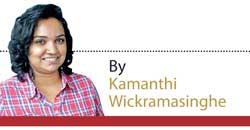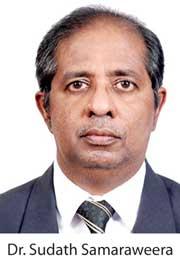
Health experts seek public support as they accept that they are running on limited resources to manage the pandemic situation
A Situational Assessment should be assigned to a geographic area that will inform whether and how to adjust public health and social measures (PHSM)
More data is required to analyze if we are falling in to the new classifications
The Epidemiology Unit has to take the responsibility in doing the necessary calculations and communicating the risk to the public
Just because a new document is issued, it doesn’t mean that control measures should change
 As Sri Lanka witnessed the highest number of deaths in a single day and with PCR testing and bed capacity reaching a maximum, health experts claim that Sri Lanka is now in Community Transmission Level 3 (CT 3), as per the latest WHO report. According to the report CT 3 indicates a high incidence of locally acquired, widely dispersed cases detected in the past 14 days. However, with divided opinions on CT, experts and authorities continue to debate on whether a new response strategy is required to fit the new definition or whether existing control measures are adequate.
As Sri Lanka witnessed the highest number of deaths in a single day and with PCR testing and bed capacity reaching a maximum, health experts claim that Sri Lanka is now in Community Transmission Level 3 (CT 3), as per the latest WHO report. According to the report CT 3 indicates a high incidence of locally acquired, widely dispersed cases detected in the past 14 days. However, with divided opinions on CT, experts and authorities continue to debate on whether a new response strategy is required to fit the new definition or whether existing control measures are adequate.

New categories
As per the new classification, there are seven new categories. These include :
- No (active) cases
- Imported / Sporadic cases
- Clusters of cases
- CT 1 : Low incidence of locally acquired widely dispersed cases detected in the past 14 days
- CT 2 : Moderate incidence of locally acquired widely dispersed cases detected in the past 14 days
- CT 3 : High incidence of locally acquired widely dispersed cases in the past 14 days
- CT 4 : Very high incidence of locally acquired widely dispersed cases in the past 14 days
In a small island developing states with limited capacity, stringent PHSM may be warranted at a relatively low level of transmission
Situational assessment
The report further states that a Situational Assessment should be assigned to a geographic area that will inform whether and how to adjust public health and social measures (PHSM). Situational levels should only be considered indicative because they may not correspond well to the response required in a specific context. For example, in a small island developing states with limited capacity, stringent PHSM may be warranted at a relatively low level of transmission.
The Situational Levels are defined as follows :
- Situational Level 0–Corresponds to a situation with no known transmission of SARS-CoV-2 in the preceding 28 days
- Situational Level 1–A situation where basic measures are in place to prevent transmission
- Situational Level 2 – A situation with low community incidence or a risk of community transmission beyond clusters
- Situational Level 3 – A situation of community transmission with limited additional capacity to respond and a risk of health services becoming overwhelmed
- Situational Level 4 –An uncontrolled epidemic with limited or no additional health system response capacity available.

Classification accepted
When inquired, Health Ministry media spokesperson Dr. Jayaruwan Bandara said that we are in a situation with limited resources as mentioned in Situational Level 3. “This is why we need public support.”
 A worrysome situation
A worrysome situation In his comments, Consultant Family Physician and former President of Sri Lanka Medical Association Dr. Ruvaiz Haniffa said that being in community transmission with the current virus mutation strain D614G which has a high viral load and high transmissibility is extremely worrisome.“We are at least in Community Transmission (CT) Level 3 as per the new WHO classification.The Health authorities should have been looking at what was there and NOT what they wanted to be there. They should have told the decision makers what had/has to be told and not what they wanted to hear.”
More data required 
Speaking to the Daily Mirror, Government Medical Officers’ Association Editor Dr. Haritha Aluthge said that more data is required to analyze if we are falling in to the new classifications. “For that we need data on mortality rate, the number of symptomatic and asymptomatic patients being reported, community prevalence etc. If the definitions are different to that of the previous report we will have to change our response strategies.”
He further said that the Epidemiology Unit has to take the responsibility in doing the necessary calculations and communicating the risk to the public. “With that the response from front-line healthcare workers, the government and the public should change accordingly.”

Continuing existing measures
However, Chief Epidemiologist Dr. Sudath Samaraweera opined that just because a new document is issued, it doesn’t mean that control measures should change. “The ground level work is done by us. We are responding to the situation depending on the number of cases being reported and taking several other factors into consideration.”

 As Sri Lanka witnessed the highest number of deaths in a single day and with PCR testing and bed capacity reaching a maximum, health experts claim that Sri Lanka is now in Community Transmission Level 3 (CT 3), as per the latest WHO report. According to the report CT 3 indicates a high incidence of locally acquired, widely dispersed cases detected in the past 14 days. However, with divided opinions on CT, experts and authorities continue to debate on whether a new response strategy is required to fit the new definition or whether existing control measures are adequate.
As Sri Lanka witnessed the highest number of deaths in a single day and with PCR testing and bed capacity reaching a maximum, health experts claim that Sri Lanka is now in Community Transmission Level 3 (CT 3), as per the latest WHO report. According to the report CT 3 indicates a high incidence of locally acquired, widely dispersed cases detected in the past 14 days. However, with divided opinions on CT, experts and authorities continue to debate on whether a new response strategy is required to fit the new definition or whether existing control measures are adequate.

 A worrysome situation
A worrysome situation 
